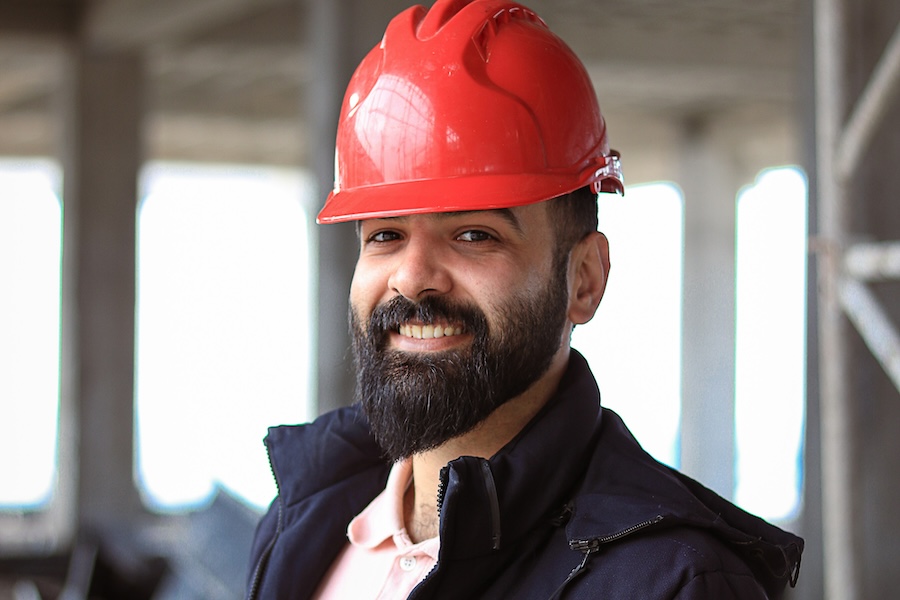
10 Apr Se Habla Construcción: Bridging the Language Gap in Commercial Construction
The American construction industry is a melting pot of cultures and languages and is becoming increasingly diverse. According to the Bureau of Labor Statistics, Hispanic workers make up a significant portion of the workforce, reaching up to 80% in states like Florida, Texas, and California. This diversity presents both opportunities and challenges for commercial construction companies.
Communication is Key: Ensuring Safety and Productivity
Embracing multilingual communication is no longer just a best practice, it’s a necessity. By bridging the language gap, you create a safer, more productive, and ultimately, more successful work environment. Effective communication is paramount to success in any large construction project. When language barriers exist, safety protocols become unclear, training becomes ineffective, and employee morale suffers. Here’s a real-life example of how my fluency in Spanish helped a client navigate these challenges.
A Case Study: Building Bridges, Not Walls
I partner with many commercial construction company experiencing communication difficulties with their primarily Hispanic workforce. While some have safety procedures in place, the language barrier hindered clear communication and understanding of complex protocols. This leads to confusion, potential safety hazards, and a sense of disconnection between management and workers. To address this challenge, I implement a multi-pronged approach. For starters, you can significantly improve your workforce experience with these easy fixes:
- Translate Safety Materials: All safety protocols, training materials, and signage must always be translated into Spanish, ensuring everyone understands the rules and procedures – but it’s essential to have a PROFESSIONAL or native speaker do the translation. Nonsense in Spanish is just that, nonsense.
- Don’t neglect internal Comms programs: By promoting communication between management and workers, translating instructions, addressing concerns, and fostering a more open dialogue, workers will not feel like replaceable assets, which in turn reduces turnover. The companies who most aggressively embrace this have had the best outcomes in their self-performance personnel goals.
- Promoting Bilingual Leadership: It’s always a good idea to identify and recruit bilingual individuals within the workforce who could act as liaisons between management and crew members, and better yet, to fill leadership positions with bilingual candidates. Management should also receive cultural sensitivity training to better understand the needs and communication styles of their Hispanic workforce.
The Results: A Safer, More Engaged Workforce
The impact is immediate and positive. With clear communication, safety incidents decrease dramatically. Workers feel valued and understood, leading to increased morale and productivity. The projects run smoother, and a sense of community and collaboration emerges. Beyond safety, clear communication in the native language offers several additional benefits:
- Improved Training Effectiveness: Training sessions become more engaging and impactful when delivered in the native language. Workers can ask questions and clarify any doubts, leading to a better grasp of their roles and responsibilities.
- Enhanced Employee Morale: Feeling valued and understood boosts employee morale and reduces feelings of isolation. A positive work environment leads to a happier and more productive workforce.
- Stronger Employer Branding: Companies that demonstrate a commitment to inclusion and cultural sensitivity attract and retain top talent in a competitive market.
- Building Stronger Client Relationships: Clients appreciate companies that value their diverse workforce and prioritize clear communication. This builds trust and fosters successful long-term partnerships.
Investing in Multilingual Communication:
Investing in multilingual communication strategies is not just beneficial for your workforce, it’s also a smart business decision. Here are some ways to implement a multilingual approach:
- Hire Bilingual Staff: If feasible, consider hiring bilingual staff members who can effectively communicate with your diverse workforce.
- Partner with Translation Services: Utilize professional translation services to ensure accuracy and cultural sensitivity in all your communication materials.
- Invest in Language Training: Provide language training to key personnel to facilitate communication and build trust with your workforce.
- Pick the right communications team: Hire a Marketing and Communications Agency that supports these goals by embracing these practices, helping you enforce key aspects of your EVP strategy (recruiting and retention) and keeping your workforce informed and engaged.
Let’s Talk: At DCE Clarity, we understand the importance of effective communication in today’s multicultural construction industry. We offer a range of services to help you bridge the language gap and build a stronger, more cohesive team. Schedule a free consultation and discover how we can help you integrate everyone on your team.

